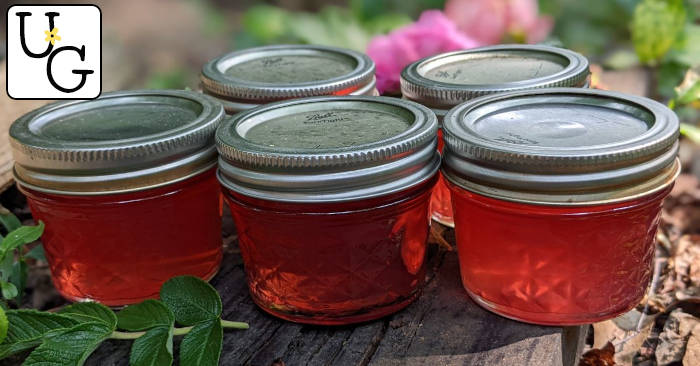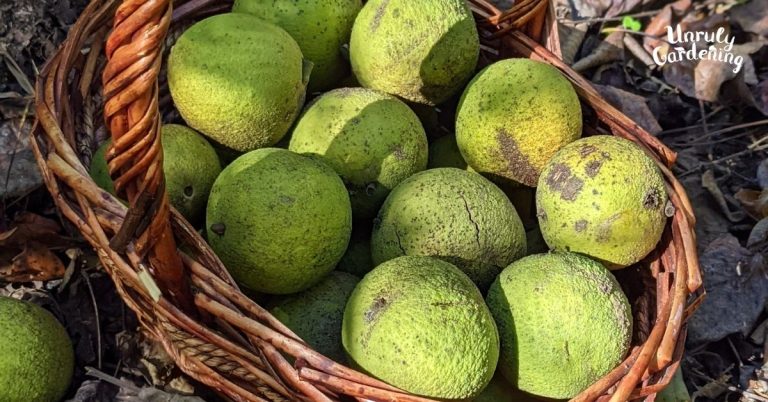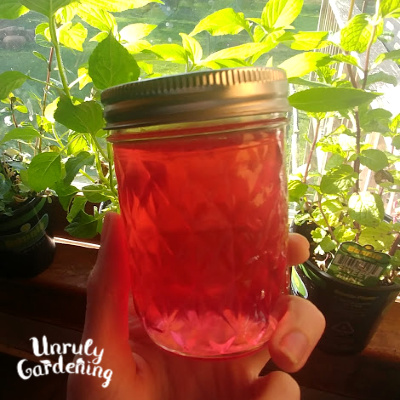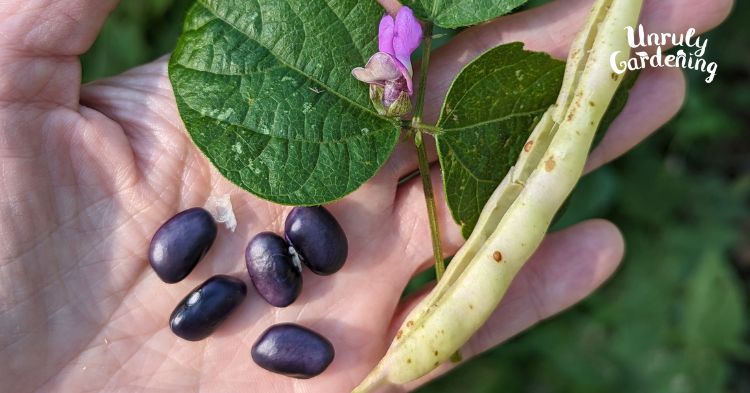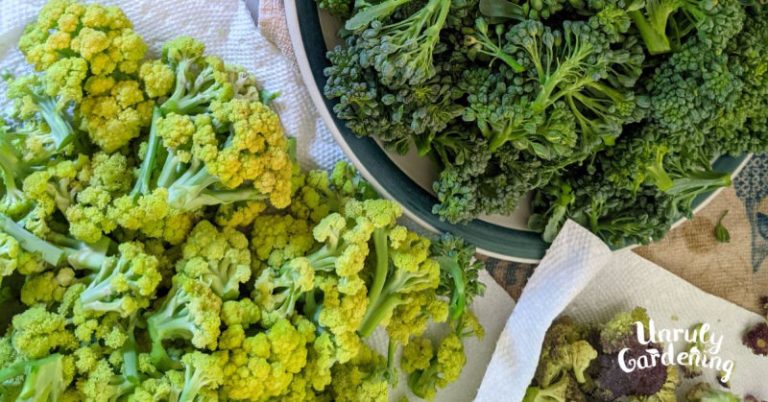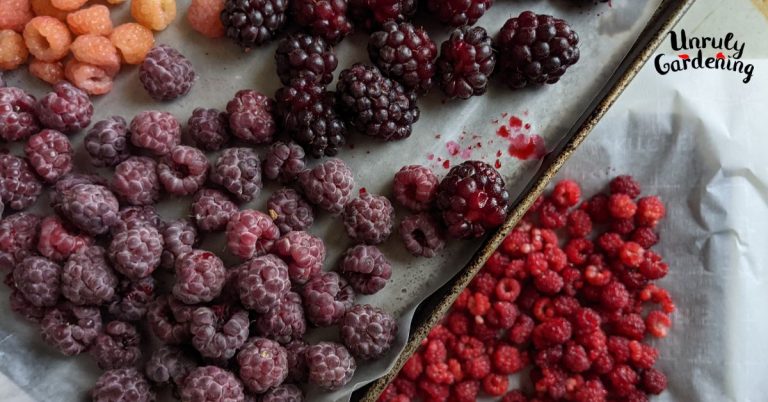How to Harvest Sunflower Seeds
Learn how to harvest sunflower seeds from your garden, plus how to save them for snacking, birdseed, or replanting in next year’s garden!

When to Harvest
Unlike many flowers, you don’t want your sunflower blooms to dry all the way up before collecting your seeds. Brown, dead, dry sunflowers have likely either dropped all their seeds or have had them eaten by wildlife.

On a sunflower that’s ready to harvest, the petals will be wilted and dried up. They may or may not still be attached. The heavy flower head will be drooping towards the ground.
The back side of the flower- the large, green calyx- will fade to yellow or yellow-green. There may be some faded brown patches.

The spent small inner flowers covering the seeds should easily rub off, and the seeds underneath should look plump and full. Actually, they should look very similar to the seeds you planted to grow your sunflower in the first place!
Striped seeds should have visible, clear stripes, and brown or black seeds should be fully colored. If they’re not, however, that’s a clear sign they’re not ready. Leave them until they’re striped or colored in fully.

Finally, if you run your hands over the bared seeds, they might be feeling a little loose. You might even notice them starting to fall out- if you see that, it’s definitely time to harvest!
One more giveaway that your seeds are ready to harvest, if you’re still not sure, is to watch for birds. When the birds start eating your sunflower seeds right out the heads, that’s a pretty good indicator there’s something there for them to eat!
Video: Growing & Harvesting Sunflower Seeds Slideshow
Here’s a slideshow summarizing this article. (Sometimes an ad plays first, but the video will start right after! The video player won’t show up if you have an adblocker.)

Harvesting Sunflower Heads
To harvest the flower heads, use a good pair of sharp pruning shears. Scissors will likely be too weak to cut through the thick, fibrous stalk. Clip off any leaves still on the stem.
Take the sunflower head, and use your hands to rub off all of the spent, small inner flowers covering the seeds. They should come off easily and quickly with no real strong force needed. This is best done outside.
(Side note: Some people save these little flowers and make tea from them!)

You can hang the sunflowers upside down to dry out further if you want. Cut ones you plan to hang with a long stalk, and secure a paper bag over the head to catch any falling seeds.
Hang them up somewhere out of the elements with good air circulation to dry for about 3 days. You won’t need to do this if the heads are dry enough already to remove the seeds easily. If you don’t have the space to hang flowers, you can prop them up separately from each other in an airy dry place for a day or two, but watch closely for mold.
Sunflower heads are huge, thick, and have lots of moisture, and that can quickly lead to mold in locations with poor circulation or moisture.
We try to get the seeds out of the heads as soon as possible after harvest, rather than leave them in the flower head and risk mold contamination.

Collecting the Seeds
Removing the seeds is simple and straightforward – just start rubbing them out of the heads with your hands. Doing this over a towel for easy collection.
Getting started can be difficult on ones that aren’t extremely loose already, but once you get a part started, things should go smoother. Push seeds with your fingers towards the hole where the harvested seeds were, and they should sort of get flipped out of their place. The edges can sometimes be looser and easier to remove than the middles.
Tear sunflower heads in half to make seed removal easier.
Other methods include rubbing the heads together, rubbing a head along an old-fashioned washboard, or using a stiff-bristle brush to remove the seeds from the head. These methods are all a bit kinder on the hands!

Drying Seeds
Once the sunflower seeds are harvested, they’ll still have moisture in them, which is no good for storage. You’ll need to dry your seeds further to prevent molding and spoilage.
Set up a drying rack with a fine-mesh bottom, or cover a larger-mesh rack with a light, breathable fabric layer, like burlap, cheesecloth, or muslin. Spread the harvested seeds out in a thin layer over the rack.
Place the rack in a dry place with good air circulation, out of direct sunlight and not too cold. Seeds can be air dried for 2-3 days, stirring the seeds around every so often.

Storage
Storing the seeds is simple, no matter if you want them for personal eating, for feeding the birds (or your farm animals), or for saving for next year.
Keep the seeds in a cool, dry, dark location. A small amount of seed can be kept in a homemade packet or a mason jar, but sunflowers produce very heavily- odds are you’re going to have more than can fit in a single jar!
Airtight containers and resealable bags are what most people use to store their sunflower seeds. This could be glass jars, bags, or even lidded buckets.
Whatever you use, make sure you open the container semi-regularly, giving the seeds a little stir to check for any signs of mold, moisture, or spoilage.
Using your Homegrown Sunflower Seeds
Now your seed is fully harvested, dried, and ready to use!
It can be set out and used in bird seed feeders, or given to your seed-eating animals as treats or food. They can also be used as food for humans – just hull the seeds first. Eating the shells isn’t good for your digestive tract. (Not sure how to eat sunflower seeds? This Reddit thread might help!)
Replanting your seeds to get new sunflowers is easy as can be. Just plant them with the same spacing and care you gave to the mother plant you got these seeds off of.
Check out our article on How to Grow Sunflower Seeds if you need a refresher!

